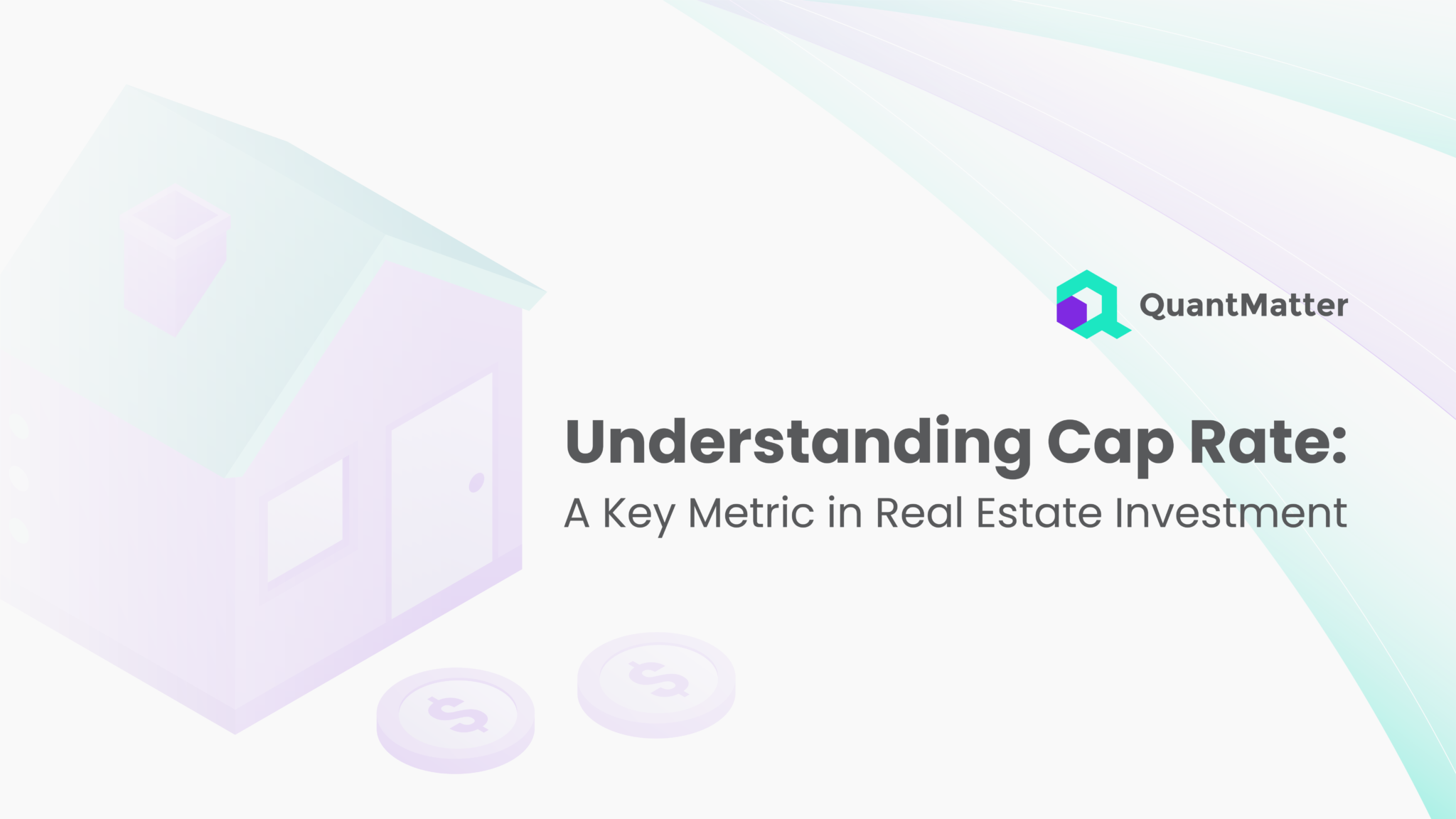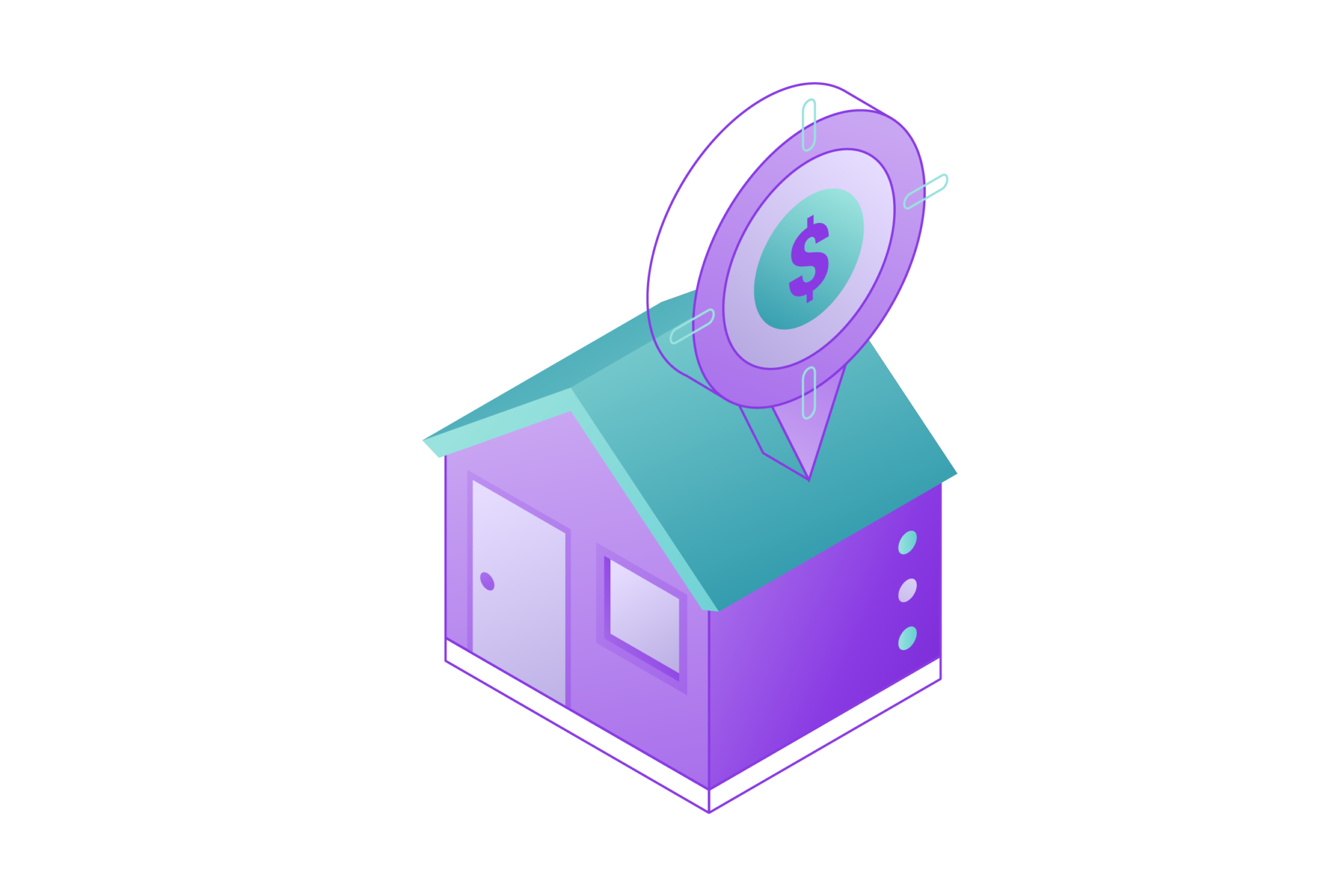
In real estate investment, where shrewd investors are concerned, there are several metrics that they make use of in order to appraise the expected return on an asset. Cap rate which is a critical tool for real estate investment analysis, offers investors a simple way to evaluate the profitability of a property. While the acquisition of properties remains an integral part of maintaining and growing a real estate investment portfolio, understanding the factors that affect the capitalization rate and recognizing its shortcomings is also essential for informed investment decisions.
Location makes a big difference when it comes to cap rates because it involves a number of factors, like the degree of accessibility to amenities, transportation hubs and employment centers, among others. Invests in properties with great locations and strong demand at lower cap rates because of their stability and future prospects of appreciation. On the contrary, properties in less desirable or distressed property markets may have higher cap rates to compensate for higher risk factors such as exposure to vacancy. The capitalization rate is one such metric that is greatly used due to its simplicity and efficiency and is also widely appreciated for the same factors. The cap rate is a critical tool for evaluating the revenue generated by income-producing properties on a profitable investment. Let’s go deep into the cap rate and its perception in the decision-making of investment.
What is Cap Rate?

The Cap Rate, as abbreviated for Capitalization Rate, is the most commonly used measure in real estate investment that depicts the earnings potential and added value of a property as an investment opportunity. It is a metric that divides a property’s net operating income by its market value (or purchase price). The determination of the cap rate gives an investor a picture of the expected return on investment (ROI) and therefore guides them in making informed decisions on which properties or parts of the real estate market to allocate their capital to.
To figure out the cap rate, it is the net operating income (NOI) divided by the property’s market value or purchasing price. Reading this figure as a percentage shows the net return an investor can expect to receive from the property. The formula is straightforward:
(Source: Wall Street Prep, 2024)
The NOI includes the revenue generated by the property following the deduction of the incurred operating expenses that do not include the tax and financing charges. Property tax, insurance, maintenance, utilities, and property management fees are among the typical operating expenses incurred. Consequently, the capitalization rate indicated the property’s income potential before deducting operating costs and irrelevant financial aspects.
Cap rates are a similar yardstick for comparing the different investment possibilities in the real estate market. A higher cap rate may demonstrate a potentially better profit return relative to the property’s purchase price, thus a stronger investment opportunity. On the contrary, a lower cap rate could also indicate a property with a higher market value or lower operating risk, which results in a lower return on investment, as noted above.
Also Read: Market Making: Strategies and Techniques (August 2024)
As such, cap rates should not be isolated but regarded as an integral part of a wider investment analysis. Elements like property type (industrial, residential or office buildings), location, market conditions (price fluctuations and demand), and investor preferences (such as income investors) can shape cap rates significantly. Another example is that properties in the most favored locations with historically stable rental income may be offered at a lower level of cap rates as they have less risk involved, while properties in undesirable locations or those in bad condition may be offered at a higher level of cap rates but with a higher risk potential.
Furthermore, we should know that the cap rates do not incorporate borrowing costs or any appreciation of property value with time. Hence, they should be used along with other financial metrics like cash-on-cash return, internal rate of return (IRR), and equity multiple to assess whether they have been used appropriately or IRR because they are more accurate in evaluating the full scope of the investment considerations. Cap rates give investors the information they need to evaluate the potential return of an investment property, but they also need to use a holistic approach while analyzing real estate by taking into account all factors and financial ratios to make rational investment decisions.
Significance of Cap Rate

Amidst the intricate tapestry of property valuations, market trends, and financial considerations, one metric stands out as a beacon of insight: what we call “the Cap Rate,” or capitalization rate. This critical calculation, although it is somewhat straightforward, combines two pivotal characteristics: income potential and market value, to come up with an ultimate know-how on whether a property is profitable and worth investing in. The cap rate serves as a valuable tool for investors in several ways:
Quick Assessment
Cap rates enable investors to make quick and easy comparisons of properties that they will acquire. This fast-paced evaluation is most needed in dynamic property markets where houses are sold over a period of days. Through a quick cap rate comparison of different real estate properties, investors can easily get an idea of the relative attractiveness of the opportunities at hand without going through laborious financial analyses. This enables investors to build an organized decision-making apparatus and concentrate their resources on assets that supply them with the most rewarding returns.
Additionally, the ease of coming up with a cap rate allows comparisons among properties of different scales and types. Regardless of whether the case is regarding residential, commercial, or multi-use properties, investors can still use the same cap rate formula to each, simplifying the assessment and decision-making process. Through this standardized approach, the complexity is eliminated and investors are able to compare different companies with ease of apples-to-apples, which leads to better informed investment decisions.
Besides, cap rates are also another key measure to be used in evaluating an investment’s income potential compared to its current market value or the cost of acquiring the property. Property with higher cap rates preferably delivers greater cash income, while those with lower cap ratings are much more stable and hold more prospects for long-term appreciation. Investors have the ability to take advantage of the most sought after deals with the help of their knowledge of cap rates and by rapidly identifying the properties that have favorable cap rates.
Risk Assessment
The core of the adventure is the relationship between cap rates and risk, and this is important for risk-return profile analysis in real estate investing. High Cap rates usually denote properties having a higher degree of risk, which can be characterized by the likes of economic distress, high vacancy rates, or the requirement for substantial capital expenditures. Speculating with properties that have higher cap rates comes with higher risks and uncertainties, as these properties might be subject to market fluctuations and operational challenges.
On the contrary, lower cap rates are bellwethers of securer investments in more stable, high demand markets. Low-cap-rate properties come in with consistent cash flows, lower risks of vacancies, and strong demand for renters, which significantly makes a venture less likely to be affected by income disruptions and value depreciation. In this regard, a lower cap-rate might signify smaller initial yields. However, mainly because of the greater foreseeability and resilience they offer during market fluctuations, they are often considered more profitable.
It is important that investors conduct comprehensive risk assessments of both the property and the location, taking into account aspects like location, market dynamics, property condition and tenant quality. Through the process of comprehensive due diligence and the assessment of the link between cap rates and risk, investors can reduce the potential negative impact and find their way to the optimum risk-adjusted return over time.
Market Trends
Cap rates function as a gauge of the present market terms, letting us know the investors’ attitude, the supply/demand ratios, and the pricing tendencies. In a competitive market that thrives on robust demand for apartments generating income, cap rates can drop as investors bid up prices to secure scarce supply. This compression is indicative of investors’ preparedness to sacrifice higher yields with a belief in the guaranteed returns and the improvements in property prices.
On the other hand, in a buyer’s market or when uncertainty abounds in the economy, cap rates can expand too, with investors requiring higher yields to accommodate the extra risk. As cap rates and risk-free rates continue to widen, the forecasted buying prospects become more enticing for experienced investors, considering that the properties are more affordable than their potential earnings at this time. Reviewing the evolution of cap rates over time enables investors to detect existing trends, predict the market movements ahead, and act on those opportunities to take advantage of them and reduce their exposure to risks.
By following market trends and identifying the factors that control cap rate shifts, investors can react efficiently and magnitude their returns in both rising and declining cycles. The dynamic nature of this strategic approach permits the investors to maneuver the complexities of the real estate market with ease and personalized attention, eventually improving their overall performance and wealth growth.
Factors Influencing Cap Rate

The complexity of cap rates in real estate investment deals requires a closer look at all variables that influence them. The web of factors that lies at the core of cap rates is intricate, while these components influence and define the investment landscape. Let’s embark on a detailed exploration of the key determinants of cap rates:Let’s embark on a detailed exploration of the key determinants of cap rates:
Location
The cap rate of a property can be significantly influenced by its location, which happens to be among the most vital factors. Location is what real estate investors call the 3 most important factors of success, and the old saying “location, location, location” emphasizes its crucial position in real estate investments. Real estate in desirable settings with a strong economy, exceptional facilities and close proximity to major transportation hubs is trading at lower capitalization rates. This situation emerges from the fact that in this environment, investors and tenants who want to take advantage of the prospects of regular income and long-term appreciation compete among themselves.
The cap rates in cities that are rich in culture and are thriving business districts are usually on the low side due to the stability and growth that they offer. Contrariwise, properties located in less attractive or economically underperforming areas might entail higher cap rates to be able to offset possible higher vacancy rates, lower rental income potential, as well as uncertain market conditions. Through addressing location as a cap rate assessment input, investors have to do comprehensive due diligence in distinctly analyzing the impact that location has on a property’s investment potential and risks relative to the market.
Property Type
This is the second key factor affecting property type, as asset classes in general have different risk-return packages and cashflows. Residential, commercial, industrial, and mixed-use properties represent particular investment choices as diverse variables like demand, market dynamics and operational factors play a role. These property types, specifically multifamily residential properties, which include apartment buildings and condominiums, often sport lower cap rates than some commercial real estate assets, such as retail or office spaces. However, this variation exists due to the perceived stability and consistent rent income that come with residential properties, which usually have low vacancy rates and a constant influx that sustains their tenants.
Also Read: Market Maker Options: Definition and How They Make Money
While commercial properties require premium cap rates to accrue expenses, including lease turnover and market fluctuations unique to this class, other asset classes may also command equity premium rates for raising operating expenses. Through this process, investors recognize the essence of each property type, enabling them to accurately evaluate the risk-return characteristics of each investment and then customize their investment strategies using this knowledge to accomplish their financial targets.
Market Conditions
The cap rates are increasingly impacted by market conditions that completely determine the economic environment, supply and demand imbalances, and investors’ psychology. In healthy economic cycles with lower unemployment rates, higher job creation, and strong consumer demand, cap rates can get compressed further as property values rise even higher. Such impressive yields tell us that the investors are eager to trade the safety and possible growth of the property for lower returns.
In contrast, when the economy slows down or there is oversupply, investors create a class rate demand by seeking higher yields to balance the increased risks and uncertainties of market conditions. But changes in interest rates, credit availability, and macroeconomic indicators are the factors that can greatly distort cap rates as well as waiver investors’ behavior. Through tracking market trends that favor investment, staying tuned to the changes in the driving forces of the economy, investors can forecast cap rate changes, and generate the capital to be utilized in light of the risk of the changes.
Conclusion
Cap rate is very much influenced by property type, with higher risks and income potential characterizing various types. Illustrating this, typically multifamily residential schemes have lower cap rates as compared to offices or retail properties, which is mainly due to the stable income from rentals and the lower vacancy rates for these types of buildings. Market conditions are also key factors in determining cap rates, where conditions like monetary value, economic situation, and accepting the supply and demand of the market can change the mood of the investors. In free markets, cap rates can decline as property prices go up, which is an indication of investors’ willingness to receive lower yields for the implied stability and appreciation prospects of the property.
The cap rate has its usef ulness as an investment analysis tool, however, it has to be looked at as a single principal. The procedure does not involve consideration of financing expenses as well as leverage, which can greatly determine the payout-in-hand. Moreover, cap rate data also hinges on certain assumptions, composed of projected rental income and operating expenses, that may not necessarily be in consonance with actual performance.
Use the cap rate advantage in real estate investment by doing thorough due diligence, factoring in risks rather than the cap rate alone, diversifying the portfolio and monitoring the market constantly. Through the recognition of cap rate-influencing factors and the implementation of the comprehensive evaluation model for investments, investors have the ability to pinpoint the viable investment opportunities that meet their portfolio diversification and risk allocation frameworks, resulting in increased chances of success in the real estate investment universe.
Disclaimer: The information provided by Quant Matter in this article is intended for general informational purposes and does not reflect the company’s opinion. It is not intended as investment advice or a recommendation. Readers are strongly advised to conduct their own thorough research and consult with a qualified financial advisor before making any financial decisions.

I craft stories that make complex ideas clear. I simplify the blend of data science, machine learning, and crypto trading, showcasing how advanced tech and quantitative models analyze data for informed trading choices. Join me in exploring the realm of quantitative trading, where my narratives make intricate concepts easy to grasp.
- Alifia Berizkyhttps://quantmatter.com/author/alifia-berizky/
- Alifia Berizkyhttps://quantmatter.com/author/alifia-berizky/
- Alifia Berizkyhttps://quantmatter.com/author/alifia-berizky/
- Alifia Berizkyhttps://quantmatter.com/author/alifia-berizky/

You’ve tackled this topic with the perfect blend of detail and readability. Kudos.